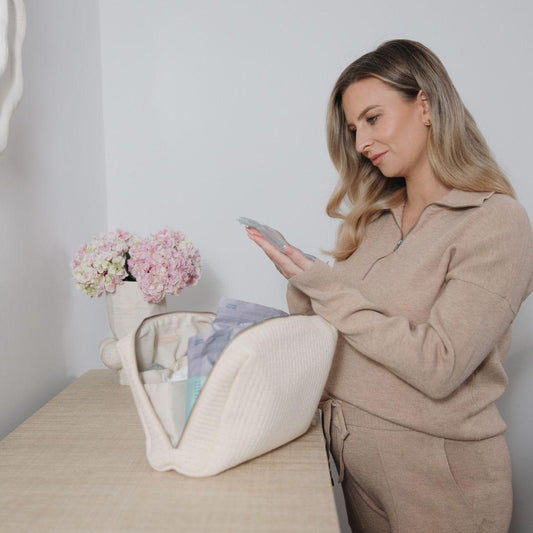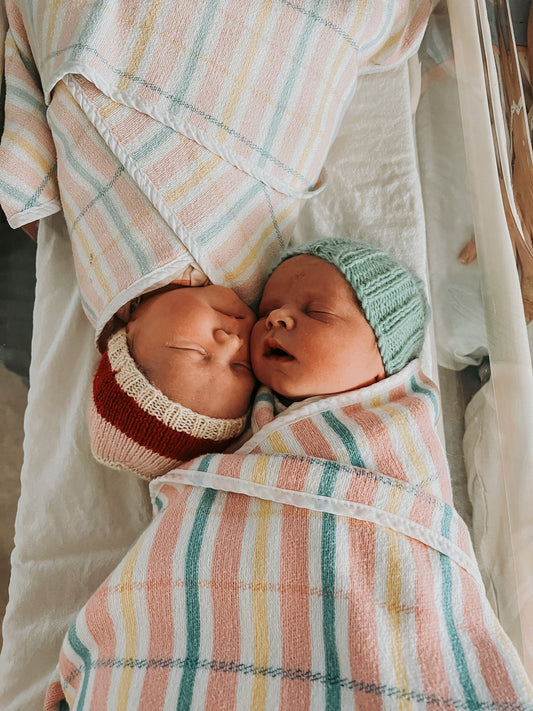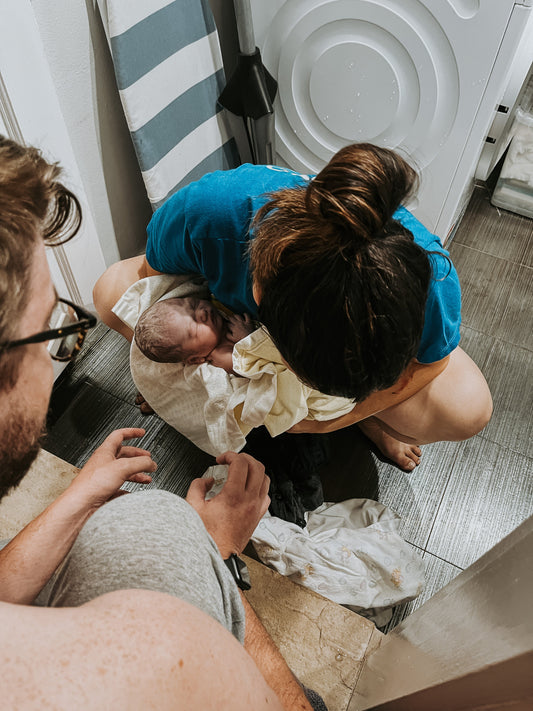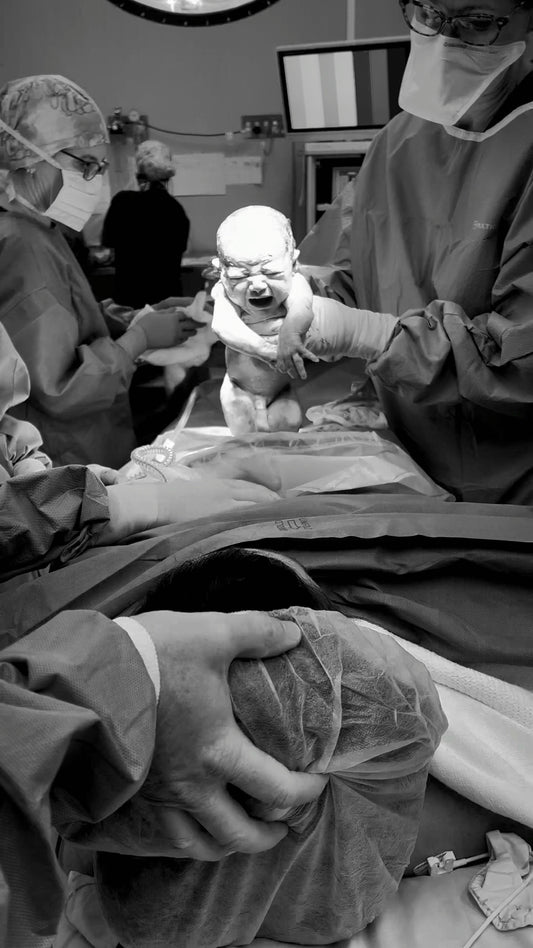hip dysplasia
Did you know that 1 in 10 newborns have hip instability [the hips can be wiggles in the socket because of loose ligaments]? Or that 1 in 100 bubs need treatment for Hip Dysplasia? Or that 1 in 500 have a completely dislocated hip?
That's how common Hip Dysplasia is.
what is hip dysplasia?
Hip dysplasia is also known as developmental dysplasia of the hip [DDH]. It refers to the abnormal development of the hip joint or misalignment of the hip bones in one or both hips. To put it simply, the ball at the top of the thigh bone is not stable within the socket, or the ligaments of the hip joint that hold it together are loose. It prevents the hip joint from working properly + leads to the joint wearing out much faster than normal.
signs + symptoms
Symptoms of hip dysplasia can often be hard to spot, even by trained medical professionals. In some cases, DDH may be present at birth or develop early in life, but this may not be picked up until your little one starts to walk. Signs that bub may have DDH:
- Bub has a stiff hip joint Bub's legs are different lengths
- Clicking or clunking is felt by Doctors or Midwives during the hip checks after birth
- Your little one leans to the affected side when standing
- Your little one has an outward-turning leg on the affected side
- Your little one has uneven skin folds on their groin or thighs, either on the front or back
DDH is said to be painless in little ones, so you may not notice any signs that they're in pain as there may be no pain involved.
causes
The actual cause of DDH is unknown, but there are many theories. One theory is that during pregnancy + labour, a mama releases a hormone called relaxin into their bloodstream that allows their ligaments to relax so that bub can fit through their pelvis during birth. Some of these hormones also enter bub's bloodstream, which can make their ligaments relax, leading to the hip joint becoming loose in the socket.
DDH is also thought to also be caused by the way bub is lying in a mama's belly or birthed, particularly the breech position [bub's bottom is closest to the exit]. Incorrect swaddling is also thought to be the cause of DDH in some little ones, so make sure bub can move their legs freely, particularly that they're able to bend up and out at the hips.
Interestingly, hip dysplasia is more common in:
- Girls
- Firstborn bubs
- Little ones who are born in the breech position
- In bubs who have a parent or sibling that had a dislocated hip joint [12x more likely to occur when this is the case]
- Little ones who have a fixed foot deformity [such as congenital talipes] or stiffness in the neck [torticollis]

diagnosis
Bub may be offered a hip ultrasound or x-ray to diagnose DDH if:
- They show any signs or symptoms of DDH
- They are born in a breech position
- Bub spent the majority of your pregnancy in the breech position
- A parent or sibling had DDH
- You or a medical professional suspect DDH
The earlier that DDH is diagnosed, the better, as this means that treatment can be started earlier. If you suspect DDH, take bub to the GP for review ASAP.
treatment
Once diagnosed, treatment for DDH varies depending on your little one and the severity. Your doctor will work with you to come up with a treatment plan using one or several strategies. Some of these treatment strategies may include:
Splints
This is a brace to keep the hip joint in the right position while it continues developing until it reaches the point that the joint is stable. Bub may have to wear this for a set amount of time each day, such as for the majority of the day or only at night.
Closed Reduction
This is a procedure where your little one is sedated [put to sleep] to allow the Doctors to move bub's hip joint into the right position. This procedure allows the hip to be put into the right position without surgery, particularly if the splint isn't working.
Open Reduction
If bub's DDH is diagnosed after 6 months of age or the splint + closed reduction don't work, bub may require an open reduction. This is when the surgeon makes a small cut in the groin area to operate on the ligaments around the joint to make it more stable. It also allows the surgeon to make sure the hip joint is put into the right position. Bub will be sedated for this procedure too.
Hip Spicas
This is a plaster cast that covers from the ankles or knees up to the waist or belly button. It's kept on 24hrs a day and may need to stay in place for several months depending on bub's treatment plan. This will impact bathing, toileting/ nappy changes and how you carry bub, so you'll be educated on this in the hospital before you go home. Bub may also need to wear splints or braces to help keep the joint in the right position + stable.
Osteotomy
This is more extensive surgery to the thigh or pelvic bones to help keep the hip joint in place. This may occur if bub's DDH is diagnosed late.

things to consider during these treatments
Car seats
- Car seats may need modifications so bub can fit while wearing a brace, cast or splint, but these must be done in consultation with an OT to ensure the safety of bub while travelling in the car seat
- An OT may recommend an Eze-on vest which is like a restraint for little ones but allows them to lie down across the backseat.
Getting around
- Bub will be unable/ may struggle to walk. As a result, they may need to be in a pram. Some prams may need modifications, but these can be done in consultation with Nurses on the ward before you go home or with OTs
- If your little one is too big for a pram, they may be recommended to use a wheelchair or Perthes trolley [which looks like a big skateboard]
Hygiene
- Casts are susceptible to moisture and need to remain dry, which can make daily hygiene measures more tricky. It's recommended that nappies are checked and changed at least every 2 hours in the day and 3 hours at night.
- Always assist older kiddos onto the toilet or bedpan to make sure they're in the right position before doing a wee or poo
- Use cotton padding around the edges of the plaster in the groin region to minimise accidental spillage into the plaster when doing a wee
- Give sponge baths instead of regular showers or baths
- Wash their hair over the edge of a sink
Position changes
- Regular position changes are essential to avoid sore spots on the body developing
- Use lots of pillows + towels to support bub
- If placing bub on their belly, make sure to supervise closely
untreated DDH
If DDH is not identified and treated, your little one may develop a painless limp when walking. They could also begin to walk on their toes or walk in a style that looks like they are waddling. If this carries on, arthritis will develop in the hip joint, eventually leading to bub needing a hip replacement.
babywearing + hip dysplasia
Babywearing is the broad term used to describe when bub is held by a wrap, sling or carrier against a mama or co-pilot's chest.
The Royal Children's Hospital says baby carriers can be good for your little one's hip development if a healthy hip placement is used, with the thighs spread around the mama or papa's torso, with hips bent and knees slightly higher than the buttocks.
The risk with baby carriers is that some can put a bub's hips into an abnormal position, putting them at risk of hip dysplasia. Because of that, it's so important that the baby carrier you purchase is approved by the International Hip Dysplasia Institute. Some baby carriers I know of that are approved by the International Hip Dysplasia Institute are Baby Bjorn, Baby Tula, Chekoh, Ergobaby, Hug-A-Bub, Kanga Wrap, Manduca, and Pognae. Whichever you choose, make sure you do your research to find one that suits your needs and is supported by the International Hip Dysplasia Institute.
I'd love to hear from our Tiny Hearts community; did your bub have Hip Dysplasia and what was their experience? Leave your comments on the original post on Facebook or Instagram!
Helping you feel prepared for parenthood is what Tiny Hearts is all about. Book into our baby + child first aid class, and let us empower you to face parenthood without fear. 💗
online baby & child first aid
$145
Learn baby & child first aid from your device at home! Purchase now and learn right away.
Our instant access course includes over 38 videos and 15 bonus downloads including content on whooping cough, croup and more!








